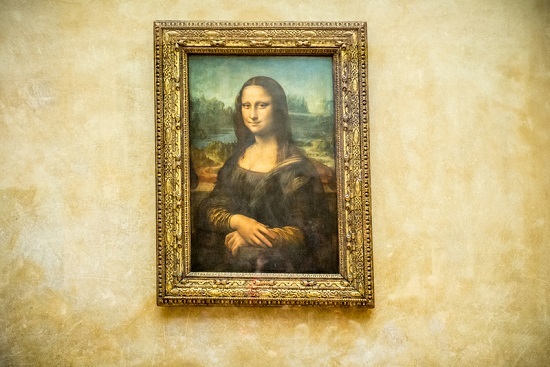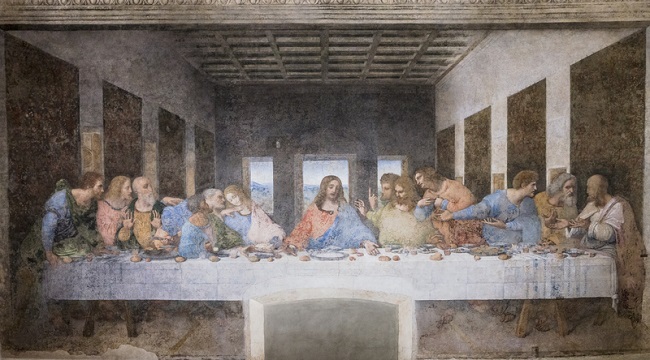

Leonardo da Vinci is primarily known as a painter. His painting Mona Lisa is considered to be the most popular painting in the world. Leonardo da Vinci is also known for many discoveries that were made way ahead of his time. However, none of these was published during his time. Leonardo da Vinci also played a major role in the development of the fields of anatomy, astronomy and civil engineering. He was one of the greatest painters the world has ever lived and a multi-talented artist.
Ser Piero da Vinci and Catharina were Leonardo's parents. He was born in Vinci, Italy. His father, was a good landowner or craftsman; His mother was a farmer. Leonardo's early years are largely the subject of historical speculation.
Leonardo's time was before the introduction of modern nomenclature in Europe. Leonardo di Ser Piero da Vinci is the full name of Leonardo. It reads Leonardo, son of Piero of Vinci.
Leonardo lived in Florence with his father. Leonardo da Vinci was a vegetarian all his life.
He trainee under a painter in Florence and later became a painter in his own right.
He signed his works as Leonardo, or I am Leonardo (Io, Leonardo). Thus, his works are generally referred to as Leonardos rather than Da Vincis.
Leonardo is widely famous for his excellent paintings. Paintings like Mona Lisa and The Last Supper are world-famous.
In the 16th century, Leonardo da Vinci painted a world-popular oil painting La Gioconda (Mona Lisa) on a poplar panel.

Figure 1: Mona Lisa painting by Leonardo da Vinci
According to research, this painting is believed to have been painted between 1503 and 1506 AD as a portrait of Francesco del Giocando's wife, Lisa Cretini.
The Last Supper is a masterpiece by Leonardo da Vinci depicting the feast Jesus Christ shared with his disciples the night before his suffering and resurrection on the cross.

Figure 2. The last supper Painting by Leonardo da Vinci
Leonardo was a trainee to Verrocchio, the most successful painter of the day, in 1466. Leonardo was 14 years old when the trainee to Verrocchio.
Leonardo often planned large paintings. So these projects had to stop in the middle without being completed.
Years were spent making models and plans for a 7-metre (24 ft (ca. 7 m)) tall bronze horse sculpture to be installed in Milan. However, due to the war with France, the plan was not completed.
Due to personal initiative, a similar statue based on some of Da Vinci's designs was made in New York in 1999, delivered to
Leonardo was commissioned to paint a public mural entitled The Battle of the Anglians in Florence. He left the city after painting several excellent early studies. The mural was not completed due to technical reasons.
Vasari, a 16th-century historian of Renaissance painters, wrote a note on Leonardo.
A local resident came to Leonardo's father and asked him to paint a picture on a round board with his talented son.
Accordingly, Leonardo drew a picture of snakes spewing fire on the blackboard.
Leonardo's father sold the terrifying painting to a Florentine art dealer. The seller sold it to the Duke of Milan.
The note says that Leonardo's father, who made a good profit from this, bought another picture of an arrow piercing the heart and gave it to the peasant.
The painting's title, known in English as Mona Lisa, derives from Leonardo da Vinci's painting of the Mona Lisa, the wife of Francesco del Giocando, by Giorgio Vasari.
Leonardo's scientific and engineering studies are more attractive, as can be seen in his works of art. These flows are recorded as notes and images in about 13,000 pages of reference books.
Leonardo tried to explain the phenomena by describing and expressing them in minute detail. He did not give priority to methods and theoretical explanations.
He began studying the anatomy of the human body through training under Andrea Verrocchio. As a painter, da Vinci excelled in anatomy, drawing muscles, tendons, and connective tissue.
Leonardo's fame caused the King of France to carry him in his hand like a trophy during his lifetime, and the King preserved him throughout his old age. Even after his death, the king was carrying him by his hand.
His interest in his work never waned. People still flock to see his well-known works of art; T-shirts still bear his paintings; Writers continue to praise his intellect and interest in portraying his private life.
In 1519, Leonardo died in Cloux, France. He was buried in the Saint-Hubert Chapel at Amboise Castle.
Born in 1452, Leonardo da Vinci was a famous Italian painter. He was a multi-talented architect, inventor, engineer, and sculptor. He trainee under a painter in Florence and later became a painter in his own right. Furthermore, he signed his works as Leonardo, or I am Leonardo (Io, Leonardo). Thus, his works are generally referred to as Leonardos rather than Da Vincis. Vasari, a 16th-century historian of Renaissance painters, wrote a note on Leonardo. In 1519, Leonardo died in Cloux, France.
Q1. Explain about Mona Lisa painting
Ans. It is one of the most popular paintings in the world. Very few paintings have been subjected to critical analysis, research, mythologizing, and satirical imitations like this one.
Q2. Explain The last supper drawing by Leonardo da Vinci
Ans. Da Vinci based this painting on a scene from the Gospel of John that describes Jesus' last meal with his disciples. Christians believe that Jesus instituted the Eucharist at the Last Supper. Hence, this final supper is also called the Supper of the Lord.
Q3. Explain Salvator Mundi's painting
Ans. Leonardo's Salvator Mundi sold for 450.3 million dollars at a New York Christie's auction on November 15, 2017, becoming the world's highest-selling artwork.